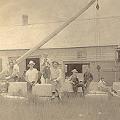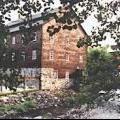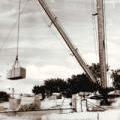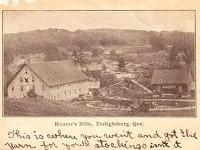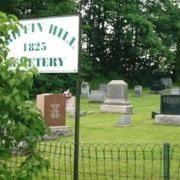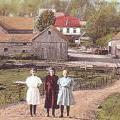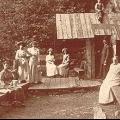The Copper Boom
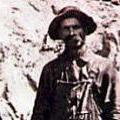 Beginning in the 1850s, the Eastern Townships were the centre of a massive "copper rush". One of the first copper mines in the area was in Leeds Township. Immense deposits were soon discovered in Acton, Bolton, and most important of all, Ascot, where rich concentrations of copper ore (and sulphur) were discovered in 1859.
Beginning in the 1850s, the Eastern Townships were the centre of a massive "copper rush". One of the first copper mines in the area was in Leeds Township. Immense deposits were soon discovered in Acton, Bolton, and most important of all, Ascot, where rich concentrations of copper ore (and sulphur) were discovered in 1859.
